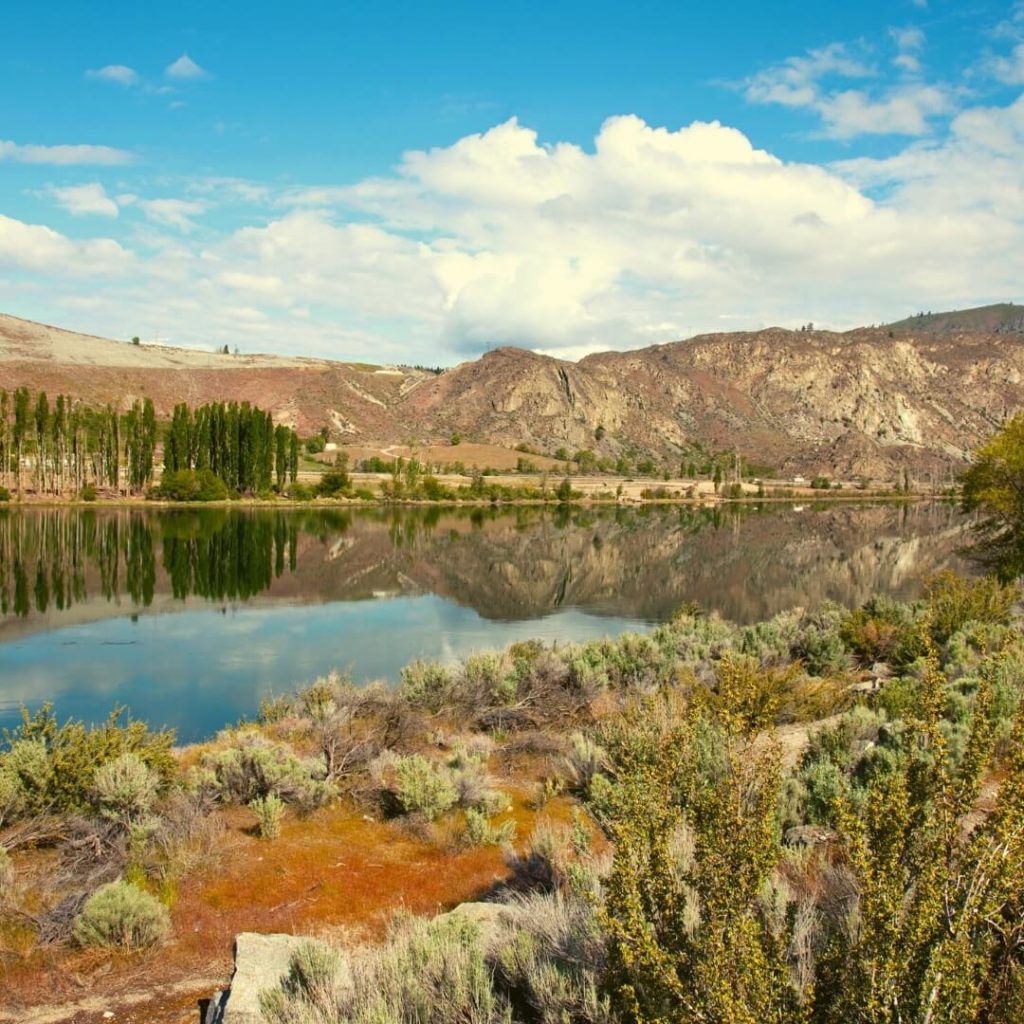Shrub-steppe: Food Web
The Hanford Reach of the Columbia River is home to a diverse array of plant and animal species and the Hanford Reach National Monument is managed by the U.S. Fish and Wildlife Service.. The three hundred square miles of the monument surround the Hanford Site, where plutonium was produced for nuclear weapons during World War II and the Cold War. Some of Hanford’s structures and buildings remain, and waste clean-up will continue long into the future, but much of the preserved land is undeveloped. It provides a window to the past, a view of the land and its living things as they were before modern agriculture and urban development.
The massive river brings freshwater to the arid shrub-steppe landscape, and where water and desert meet, you may see a concentration of wildlife. The sight of a deer or coyote along the riverbank is memorable, but remember it’s an indication of a larger web of energy that supports that animal. For every creature seen, there are numerous connections unseen…until you take a closer look. Grazing animals are fed by the grasses and evergreen sagebrush, which are fueled by abundant sunshine. Predators and scavengers feast on spawned-out salmon, which bring nutrients from the ocean far inland. Without many trees, the birds find places to nest among the shrubs, on the ground, and even in the burrows left by other animals.
The REACH Museum’s Gallery “The Living Land” provides a glimpse into the web of life in every season, but these activity sheets can also help you learn the names of the Hanford Reach’s plants and animals and their connections to each other. If you print them out, you won’t want to make them double-sided, because there are some things to cut out.
The shrub-steppe ecosystem, also called sagebrush-steppe, stretches from eastern Washington into Oregon, Idaho, Wyoming, and northern Nevada.

Activities
Additional Resources
Hanford Reach National Monument
- Overview of what wildlife activity you can expect each season HERE.
Integrated Environmental and Sustainability Education Learning Standards
Standard 1: Students develop knowledge of the interconnections and interdependency of ecological, social, and economic systems. They demonstrate understanding of how the health of these systems determines the sustainability of natural and human communities at local, regional, national, tribal, and global levels
Integrated Environmental and Sustainability Education Learning Standards
K-LS 1-1: Use observations to describe patterns of what plants and animals (including humans) need to survive
K-ESS 3-1: Use a model to represent the relationship between the needs of different plants and animals (including humans) and the places they live
2-LS 4-1: Make observations of plants and animals to compare the diversity of life in different habitats
3-LS 3-2: Use evidence to support the explanation that traits can be influenced by the environment
5-PS 3-1: Use models to describe that energy in animals’ food (used for body repair, growth, motion, and to maintain body warmth) was once energy from the sun
5-LS 2-1: Develop a model to describe the movement of matter among plants, animals, decomposers, and the environment
Integrated Environmental and Sustainability Education Learning Standards
G2.K.2 Identify natural events or physical features such as air, water, land, or wind.
G2.1.4 Identify natural events or physical features.
G1.1.1 Be able to identify local geographic locations and bodies of water.
G2.2.1 Identify some common and unique cultural and environmental characteristics of specific places.
SSS1.4.1 Identify the concepts used in documents and sources.
SSS2.4.2 Identify the main ideas from a variety of print and non-print texts.
